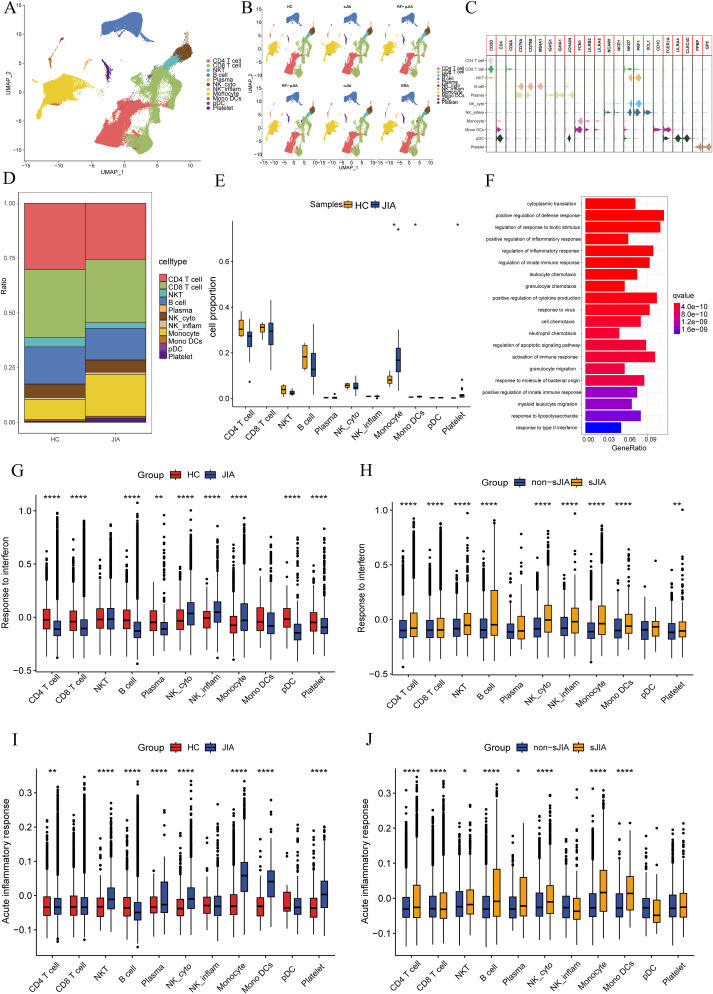
Single-cell landscape of immunological responses in patients with juvenile idiopathic arthritis


The study aimed to analyze the single-cell transcriptomes of immune cells in juvenile idiopathic arthritis (JIA) patients to understand the cellular heterogeneity within the immune system. Peripheral blood samples from fourteen JIA patients and four healthy individuals were subjected to single-cell RNA sequencing. Various subtypes of JIA were included in the patient cohort. Functional analyses, such as pseudotime trajectories and cell communication studies, were conducted to uncover immune cell changes in JIA patients. Results showed disrupted interferon and acute inflammatory responses in most cell types of JIA patients, with particularly intense responses in systemic JIA (sJIA) patients versus non-sJIA patients. Pseudotime analysis of CD4+ T, CD8+ T, B, and myeloid cells revealed that the functions of each cytokine production, cytotoxicity, and the processing and presentation of antigens were progressively strengthened, while the regulation of nuclear factor kappa B (NF-κB)-related pathways was weaker in CD4+ T and CD8+ T cells than in non-JIA. Reclustering analysis of myeloid cells highlighted interferon-related functions predominantly in non-classical monocytes of sJIA patients. Additionally, cell communication analysis identified unique ligand–receptor pairs in sJIA, suggesting potential roles in disease progression. In conclusion, interferon disorders are evident across various immune cell types in JIA patients, with stronger responses observed in sJIA patients. The ligand–receptor pairs involving migration inhibitory factor (MIF) and CXCR7/CD44 may contribute to differing joint symptoms between sJIA and non-sJIA patients. Moreover, non-classical monocytes and the CXCR2 receptor in MIF signaling may play crucial roles in sJIA progression.
